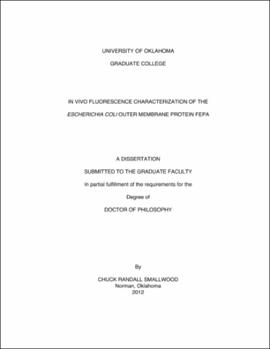| dc.description.abstract | Opportunistic microbial pathogens rely heavily on acquisition of nutrients to survive hostile environments. The complexity and redundancy of iron acquisition systems in bacteria illustrates the importance of iron in cellular processes. Siderophores are secreted into the extracellular environment to chelate iron, but these iron complexes must reenter through high affinity receptors, which belong to the ligand-gated porin (LGP) superfamily. The siderophore ferric enterobactin (FeEnt) is specific to the outer membrane (OM) receptor FepA, a 22-stranded Beta-barrel LGP that contains active surface loops and a N-terminal globular pore obstruction, that actively transports the ligand by unknown mechanism that is thought to require energy from the inner membrane (IM) TonB complex. FeEnt binding is proposed to follow a two-state binding mechanism in the FepA surface loops where initial binding occurs in the individual loop extremities (B1) with subsequent collaboration of all surface loops and N-domain loops (B2) for uptake of the ligand through the FepA N-domain. We studied the reactivity of single Cys sites to fluoresceination that revealed thermal dependent loop conformational motion. Although toxins (ColB, ColD) bind to FepA receptor to enter and kill the cell, results from the accessibility of multiple Cys sites to fluoresceination did not indicate that colicin B traversed the FepA channel to enter the cell, but may enter the periplasm through a different mechanism. Furthermore, the lack of TonB dependent labeling of multiple single Cys sites in FepA contradicted previous in vitro results of TonB-dependent loop conformation studies of both FepA and FhuA (1,2). Studying the accessibility of multiple single Cys sites in the FepA surface loops provided an opportunity to analyze loop conformational motion with fluorescence spectroscopy in living cells. In vivo fluorescence changes of probes attached to individual FepA surface loops provided specific characterizations of loop motion during FeEnt uptake that quantified B1 and B2 rates of FeEnt binding in the loops. Furthermore, TonB-dependent loop conformational states revealed that differences in loop conformation exist during FeEnt uptake and a possible holding area for FeEnt exists, located between the interface of the FepA surface loops and N-terminal globular domain. | |
